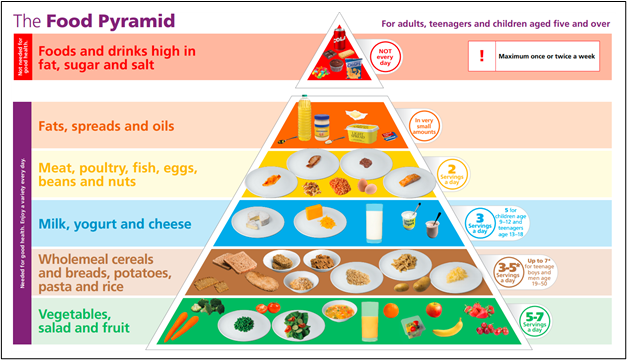Recent discourses have called into question a move more than ten years ago during the Obama administration that reduced the prevalence of whole and 2% milk in schools, which was intended to combat obesity among children. A noteworthy advocate for this cause is Robert F. Kennedy Jr., currently serving as the Secretary for the US Department of Health and Human Services. Kennedy has criticized the prevalent US Dietary Guidelines for Americans as being outmoded. He has been promoting the migration from low-fat dairy products to those with full fat in Head Start programs, putting special emphasis on whole milk.
Championing this cause in legislature, the US Senate has presented it for discussion with the Committee on Agriculture, Nutrition & Forestry holding a discussion about the Whole Milk for Healthy Kids Act. This legislatory proposition aims to reintroduce higher-fat milks into school meal programs as an addition to skim and low-fat milk, which are already mandatory for children above two years old. The bill isn’t restricted to the Senate alone; a similar proposal exists within the US House of Representatives.
These bills were set in motion by Republican legislators in January, but their appeal transcends party lines, garnering support from both sides of the aisle. Senator Roger Marshall from Kansas introduced the bill to Senate, reminiscing about the important place whole milk held in his childhood menu, with regular deliveries from his grandparents two or three times a week.
The National Milk Producers Federation has expressed anticipatory eagerness to help lawmakers pass the proposed legislation that promises an increase in the consumption of milk by students. But this proposal is not without its critics. The crucial role played by the federal government in determining the food served in schools across the nation is dependent on the Dietary Guidelines for Americans. These guidelines get revised every five years by both the Health and Human Services and the Agriculture Department, and have promoted either low-fat or fat-free dairy for those over two years old for over four decades.
The National School Lunch Program offers affordable or even free meals to students and must abide by these dietary guidelines. To curb obesity and other health issues among children, the Healthy, Hunger-Free Kids Act was passed in 2010. This Act forced schools to provide meals with lower levels of fat, sugar, and sodium while increasing protein, whole grains, fruits, and vegetables. Consequently, the National School Lunch Program effectively limited milk options to skim and low-fat milk, banning whole milk with little room for exception, even for certain medical conditions.
Concerns over this issue revolve around saturated fat, whose consumption has a historical link to cardiovascular disease and obesity. Despite the variation in fat and caloric content, all types of milk have comparable nutrient profiles. Whole milk contains 3.25% to 3.5% milk fat, significantly more than the 1% or 2% found in low-fat milk and the mere 0.5% in fat-free milk.
All milk is enhanced with vitamin D which works in tandem with calcium, bolstering bone strength and amplifying the absorption of both minerals. Other notable minerals present in milk enhance bone health and regulate blood pressure.
As we approach this year’s revision of the dietary guidelines for 2025-30, the committee has scrutinized research regarding milk and its impact on human health. this body of research reveals limited evidence supporting the benefits of high-fat milk in terms of body composition, growth, and obesity risk among children aged 2 to 5.
Although the committee could not conclusively find benefits or harm for older demographics, certain reservations about the extant research restricted them from drawing any definitive conclusions. Consequently, the committee currently lacks enough evidence to propose changes to present guidelines.
Dr. Dariush Mozaffarian, cardiologist and Director of the Food is Medicine Institute at Tufts University in Boston, expressed perplexity at the consistent government recommendation against full-fat dairy. Dr. Mozaffarian also criticized the oversimplified regulation of saturated fats, indicating that varying molecular structures imply they’re not all harmful.
Certain research suggests that the medium-chain triglycerides present in dairy fats could offer metabolic benefits, potentially aiding in the management of type 2 diabetes. Some studies even suggest that consuming dairy fat could potentially lower the risk of cardiovascular disease. However, this does not directly imply that all full-fat dairy products can reduce health risks. For instance, milk and yogurt have a neutral relationship to such diseases.
Dr. Mozaffarian strongly recommended the reintroduction of whole milk into schools and American diets, including whole-fat yogurt and cheese. He posited that not only does dairy fat lack any direct link to negative health outcomes, but it may also contribute to reducing the risk of diabetes.
An interesting subtext to this debate is children’s preference for flavored milk in the absence of whole milk. Many children tend to find the taste of plain lower-fat milk unappealing and gravitate towards chocolate or strawberry-flavored lower-fat milks, which unfortunately contain more sugar.
While the type of fat consumed is important, both Dr. Mozaffarian and Reed stress the value of considering a person’s overall diet rather than focusing solely on individual ingredients. This implies the need to prioritize foods rich in fruits, vegetables, whole grains, lean meats, and healthy fats. This parallels Dr. Mozaffarian’s concern over the disregard for ultra-processed foods in schools and the federal government’s drastic cuts in programs that deliver fresh food to schools and food banks.

